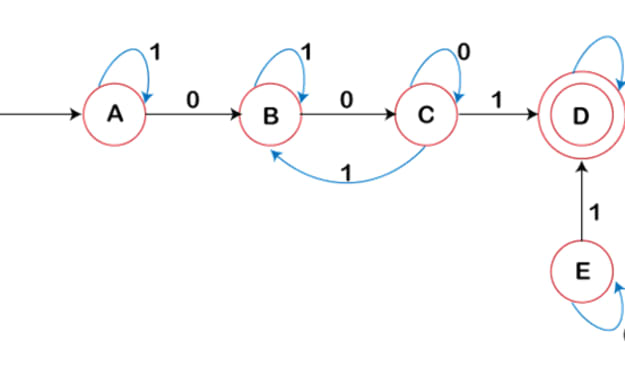Vocalists' Guide: A List of Musical Terms Every Singer Should Know
Musical Terms Every Singer Should Know

Singers, like instrumentalists, rely on a unique set of musical terms to interpret, perform, and communicate music accurately. Understanding these terms is crucial for vocalists to develop their technique and deliver expressive performances. This guide will explore essential musical terms every singer should know, helping you navigate the vocal landscape with confidence.
1. Vibrato:
Vibrato is a slight, rapid variation in pitch that adds warmth and richness to a note. It is a natural oscillation that occurs in the voice and is used to enhance or intensify a note. Developing a controlled vibrato is a sign of vocal maturity and can significantly improve the expressiveness of your singing.
Example: Listen to opera singers or jazz vocalists like Ella Fitzgerald to hear excellent examples of vibrato.
Tips for Practice: Start by singing a sustained note and gradually introduce a gentle oscillation. Use a piano or tuner to ensure the pitch variation is controlled and centered around the correct note.
Importance: Vibrato adds emotional depth to a performance, making the voice sound more polished and professional. It helps sustain longer notes with a beautiful, shimmering quality that captures the listener’s attention.
Challenges: Achieving a natural vibrato can be challenging. Some singers struggle with creating an even oscillation or find that their vibrato is too fast or slow. Consistent practice and proper vocal technique are essential.
2. A cappella:
A cappella refers to singing without any instrumental accompaniment. This style showcases the pure, unadulterated sound of the voice and often involves complex harmonies and rhythms. It is popular in genres like barbershop, gospel, and contemporary a cappella groups.
Example: Groups like Pentatonix and The King's Singers are renowned for their a cappella performances.
Tips for Practice: Focus on pitch accuracy and blend when singing a cappella. Practice with a tuning app or pitch pipe to ensure your intonation is spot-on.
Importance: A cappella singing emphasizes the importance of vocal precision and harmony. Without instrumental backing, singers must rely on their ear and blend skills to create a cohesive sound.
Challenges: Maintaining pitch and timing without accompaniment can be difficult. Singers must develop strong internal rhythm and pitch reference, often through extensive ear training.
3. Falsetto:
Falsetto is a method of voice production used by male singers to sing notes higher than their normal range. It involves a light, airy sound that differs from the full, rich tone of the chest voice. Falsetto is commonly used in pop, rock, and classical music.
Example: Listen to artists like Justin Timberlake or the Bee Gees, who frequently use falsetto in their songs.
Tips for Practice: Start by gently sliding from your chest voice to falsetto on a comfortable pitch. Focus on maintaining a relaxed throat and steady airflow.
Importance: Falsetto expands a singer’s vocal range and adds versatility to their performance. It allows male singers to reach higher notes without strain and can be used for stylistic effect.
Challenges: Transitioning smoothly between chest voice and falsetto can be tricky. Singers need to develop control over their vocal registers to avoid breaks and maintain consistency.
4. Breath Control:
Breath control is the ability to manage breath for sustained and powerful singing. It involves proper diaphragmatic breathing and efficient use of air. Good breath control is essential for maintaining pitch, volume, and endurance during a performance.
Example: Opera singers like Luciano Pavarotti demonstrate exceptional breath control, allowing them to sing long, powerful phrases.
Tips for Practice: Practice diaphragmatic breathing exercises, such as inhaling deeply and slowly through the nose, expanding your abdomen, and exhaling steadily. Use exercises like "sustained hissing" to control the release of breath.
Importance: Breath control supports a singer’s ability to perform long phrases and maintain dynamic control. It is foundational for achieving a strong, steady, and expressive vocal tone.
Challenges: Developing breath control requires consistent practice and proper technique. Singers must focus on building lung capacity and control through targeted exercises.
5. Articulation:
Articulation refers to the clarity and precision in the production of successive notes and lyrics. Proper articulation ensures that the audience can understand the words and emotions being conveyed. It involves the use of lips, teeth, tongue, and palate to shape sounds.
Example: Musical theater performers, like those on Broadway, exhibit excellent articulation, making every word clear and expressive.
Tips for Practice: Practice tongue twisters and diction exercises to improve your articulation. Focus on enunciating consonants and maintaining clarity even in fast passages.
Importance: Clear articulation enhances communication with the audience. It ensures that lyrics are understood, which is especially important in storytelling and conveying emotions.
Challenges: Maintaining clear articulation without compromising vocal quality can be challenging. Singers must find a balance between precise diction and natural expression.
Understanding these terms helps singers improve their technique and deliver more expressive performances. By mastering vibrato, a cappella singing, falsetto, breath control, and articulation, vocalists can enhance their musicality and connect more deeply with their audience. These foundational elements are crucial for any singer looking to refine their craft and achieve their full potential.
Which of these terms have you found most challenging in your singing practice? Share your experiences and tips with fellow vocalists.
About the Creator
Music Industry Updates
Welcome to Music Industry Updates, your go-to hub for the latest happenings in the music world.
Stay tuned, stay informed, and stay inspired with Music Pulse – where every beat counts.
Enjoyed the story? Support the Creator.
Subscribe for free to receive all their stories in your feed. You could also pledge your support or give them a one-off tip, letting them know you appreciate their work.






Comments
There are no comments for this story
Be the first to respond and start the conversation.